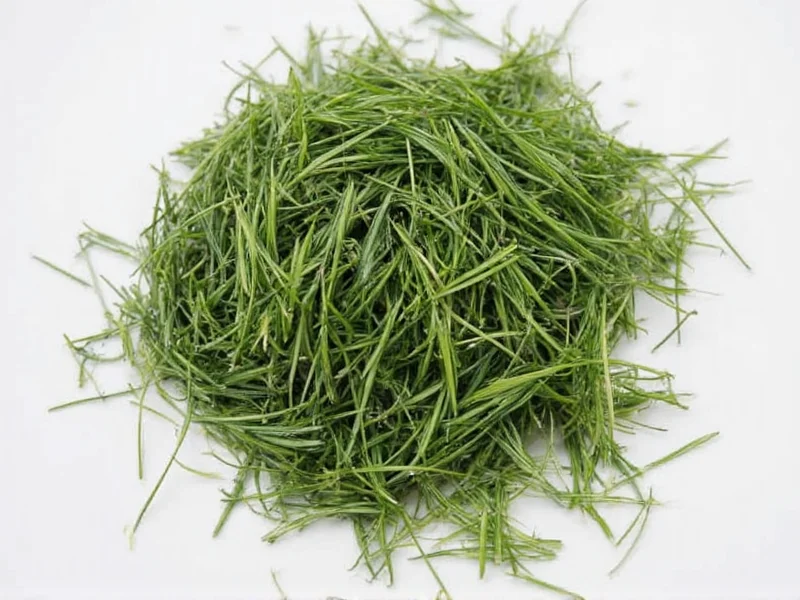Understanding herb conversions is essential for consistent cooking results. When substituting fresh dill with dried in your recipes, this measurement ratio ensures your dishes maintain the proper flavor balance without becoming overpowering.
Why the 3:1 Fresh to Dried Dill Ratio Matters
Fresh dill contains significant moisture that evaporates during the drying process. This concentration effect means dried dill delivers more intense flavor in a smaller volume. The standard culinary guideline of using one-third the amount of dried herbs compared to fresh applies perfectly to dill.
Professional chefs and experienced home cooks rely on this conversion when adapting recipes based on ingredient availability. Whether you're making tzatziki sauce, pickles, or fish dishes that call for dill, getting this measurement right affects your final dish's flavor profile significantly.
Practical Dill Conversion Guide for Cooking
Here's a quick reference for converting fresh dill to dried in your recipes:
| Fresh Dill | Dried Dill Equivalent | Best Usage Context |
|---|---|---|
| 1 tablespoon | 1 teaspoon | Salad dressings, dips, finishing dishes |
| 1/4 cup | 1 tablespoon | Cooking sauces, soups, stews |
| 1 cup | 1/4 cup | Pickling recipes, large batch preparations |
Flavor Differences Between Fresh and Dried Dill
While the measurement conversion is straightforward, understanding the flavor differences helps you adjust recipes more effectively. Fresh dill offers bright, grassy notes with subtle anise undertones, while dried dill develops earthier, more concentrated flavors with slightly less complexity.
When substituting dried for fresh dill, consider these factors:
- Dried dill works better in long-cooking dishes where flavors have time to meld
- Fresh dill provides superior flavor when used as a finishing herb
- Dried dill maintains potency longer in acidic environments like pickling solutions
- Fresh dill loses flavor quickly when exposed to heat
Proper Storage for Maximum Flavor Retention
To ensure your dried dill maintains its potency for accurate measurements:
- Store in an airtight container away from light and heat
- Use within 6-12 months for best flavor (dried herbs gradually lose potency)
- Check freshness by rubbing a small amount between your fingers - strong aroma indicates good quality
- Never store dried herbs above the stove where heat degrades quality
Fresh dill requires different storage approaches - keep it refrigerated with stems in water (like flowers) and use within 3-5 days for optimal flavor.
Recipe Adjustment Tips for Dill Substitution
When converting recipes from fresh to dried dill, follow these professional kitchen techniques:
- Add dried dill early in the cooking process to allow flavors to develop
- Start with slightly less than the converted amount, then taste and adjust
- For delicate dishes like fish or egg salads, reduce the dried dill by 25% from the standard conversion
- When making pickles or fermented foods, use the full conversion ratio as acidity affects herb potency
- Combine dried dill with a small amount of fresh lemon zest to mimic fresh dill's brightness
Common Mistakes to Avoid with Dill Conversions
Many home cooks make these errors when substituting fresh dill for dried:
- Using equal measurements (1:1 ratio) resulting in overpowering dishes
- Adding dried dill at the end of cooking when it needs time to rehydrate
- Not accounting for the age of dried herbs (older = less potent)
- Using dried dill in recipes specifically designed for fresh dill's texture
- Forgetting that different drying methods affect potency (sun-dried vs oven-dried)
Remember that personal taste preferences play a role too. Some people prefer slightly stronger dill flavor, while others find it overpowering. Always taste as you cook and adjust accordingly.
When to Stick With Fresh Dill
Certain dishes simply don't translate well with dried dill substitutions. These include:
- Fresh dill salads where texture matters
- Garnishes for visual appeal
- Quick-cooking dishes with minimal cooking time
- Ceviche and other raw preparations
- Delicate sauces served immediately
Understanding when substitution works and when fresh dill is essential will elevate your cooking results significantly.
Can I use dried dill instead of fresh in tzatziki?
Yes, but use one-third the amount of dried dill compared to fresh. For tzatziki specifically, start with 1 teaspoon dried dill per cup of yogurt instead of 1 tablespoon fresh. Add gradually and taste, as dried dill can become overpowering in this delicate sauce.
How do I adjust dill measurements for pickling recipes?
For pickling, use the standard 1:3 conversion (1 tsp dried = 1 tbsp fresh), but consider increasing by 25% since the vinegar environment can mute herb flavors. Dried dill actually holds up better in pickling solutions than fresh, maintaining consistent flavor throughout the preservation process.
Does the quality of dried dill affect the conversion ratio?
Yes, older dried dill loses potency. If your dried dill is more than 6 months old, you might need to increase the amount by 25-50% from the standard conversion. Always check dried herbs' aroma before using - weak scent indicates reduced potency requiring measurement adjustments.
Why does my dish taste different when I substitute dried dill for fresh?
Dried dill has a more concentrated, earthier flavor profile compared to fresh dill's bright, grassy notes. Even with proper measurement conversion, the flavor characteristics differ. To bridge this gap, add a small squeeze of lemon juice when using dried dill to mimic fresh dill's brightness in your dishes.
Can I make my own dried dill at home for better flavor?
Absolutely. Air-drying fresh dill preserves more flavor than oven drying. Bundle fresh dill stems and hang upside down in a dark, well-ventilated space for 1-2 weeks. Home-dried dill often has better flavor than store-bought and follows the same 3:1 conversion ratio, though you may find it slightly more potent initially.











 浙公网安备
33010002000092号
浙公网安备
33010002000092号 浙B2-20120091-4
浙B2-20120091-4